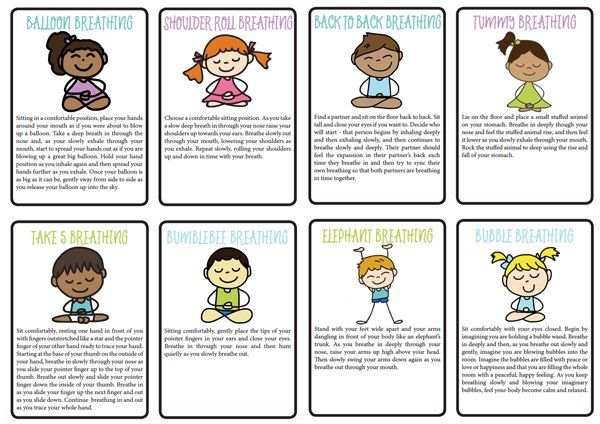(Teach these poses for the games the students will play next week)
Age Group: PreK - 5th
Number of Students: 2 students +
Duration: 20 minutes +
Overview
Students will learn and practice a variety of yoga poses for strengthening their bodies and finding balance and calm.
Materials
Open space
Instructions
- Gather students in an open space
- Teach yoga poses and practice several times. See if you can connect several poses together! (Guide pictures are below.)
- Questions?
- Begin yoga practice.
Halloween Cat Pose:
Have you ever seen a scary, Halloween cat? They love to make this shape with a rounded back.
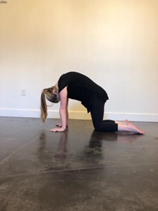
- Make a table with your body
- Bring your hands under your shoulders and your knees under your hips to get on all fours
- Find a flat back, like a table!
- Round your back like a Halloween cat!
- Tuck your chin and tail under
- Meow!
Playful Doggie Pose 1:
Do you have a dog? Have you ever seen your pet stretch in these funny positions?
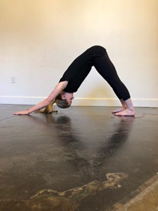
- Start in your table position on all fours, like how you made your cat!
- Tuck your toes and press your hips up to the sky! You’ll make a triangle shape.
- Don’t forget to wag your tail!
Playful Doggie Pose 2:
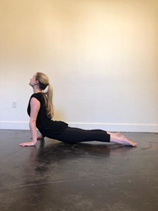
- After playful doggie pose 1, drop your hips and legs to the floor and look out and up!
- You can keep switching from playful doggie pose 1 and 2!
Quiet Mouse Pose:
Can you be quiet as a mouse? You may not have a mouse as a pet, but you might have a hamster or Guinea Pig. Or you might see your pet cat chasing a mouse!
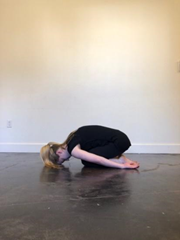
- Sit on your heels with your knees forward
- Fold forward and bring your head to the mat
- Let your arms hang by your side
- Can you stay quiet as a mouse?
Sleepy Rabbit Pose:
Let’s take a little nap and sleep like rabbits do! After a long day of hopping, rabbits get tired and need to take a rest.
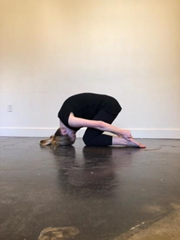
- Sit on your heels again, and fold your head forward, like your mouse pose!
- Can you grab the back of your heels?
- Now try to lift your hips up to the sky!
- Now take a nap, you sleepy rabbit!
Slow Turtle Pose:
Have you read the story of the Tortoise and the Hare? A turtle is similar to a tortoise and they move very slowly and take their time! Maybe it’s their hard, heavy shell!
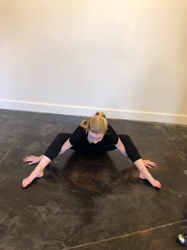
- Take a seat and open your legs wide in a straddle
- Bend your knees!
- Fold forward and see if you can reach your arms under your knees!
- Can you try to move or wiggle your way across the room like a turtle?
Jumping Frog Pose:
Have you ever had a pet frog? It’s hard for them to sit still! They have long legs for jumping and hopping! Let’s try and hop like a frog.
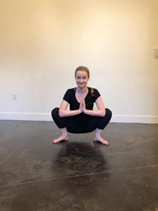
- Start standing with your feet open wide
- Bend your knees and sit as low to the ground as you can
- Don’t forget to keep your knees open wide!
- Now try and jump up high! Say Rib-bet!
- Make sure to bend your knees when you come back down!
- How many hops can you do?
- Can you hop all the way across the room?
- Whew! Watch out, your legs will get tired!
Puppy Pose:
Puppies are a lot of fun and have tons of energy! They need some down time too to stretch and rest. Can you make your best puppy pose?
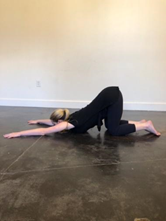
- Start in your table shape
- Keep walking your hands forward to bring your heart to the floor
- Can you feel a stretch in your belly?
- Puppies like to take deep stretches like this!
Balancing Bird Pose:
Have you ever noticed birds standing perfectly on a perch without falling? Have you ever seen them stand on one leg like a Flamingo? They have great balance and grace! Can you try to balance like a bird?
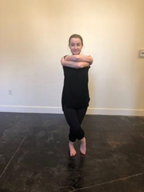
- Start standing
- Give yourself a big hug around your shoulders!
- Sit like you’re going to sit in a chair
- Can you try to cross one leg over the other?
- Don’t lose your balance!
Flying Bird Pose:
Birds are such amazing animals! Not only can they balance, but they can spread their wings and soar! Have you ever wanted to fly? Let’s take a flight!
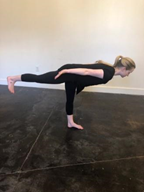
- Start standing
- Can you kick one leg behind you?
- Try to bring your body level with the floor
- Find a flat back! Can you feel your tummy engage?
- You can bring your arms by your side or open them in an airplane!
- You’re flying!
Slithering Snake Pose:
Do you have a pet snake? They are reptiles and don’t have any arms or legs! They have to move by wiggling their body! They also shed their own skin and can eat a mouse in one bite!
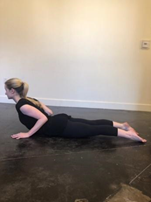
- Start lying on your belly!
- Place your hands under your shoulders
- Lift your head and heart off of the floor and wiggle like a snake
- Keep your feet flat to the floor!
Fluttering Butterfly Pose:
Have you ever had an insect for a pet? Some kids like to catch insects and keep them for a while then let them go back outside. Have you ever had a caterpillar? If you keep it long enough, it will build a cocoon and turn into a butterfly! Some zoos have butterfly gardens where they house tons of these beautiful, flying creatures!
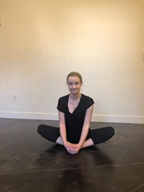
- Start seated
- Bring your feet together like a peanut butter and jelly sandwich!
- Let your knees open wide and flutter!
- Be careful not to fly away!
Lizard Pose:
Maybe you haven’t had a snake as a pet, but you might have had a lizard. A lizard is another reptile. They have long tongues and like to stick them out!
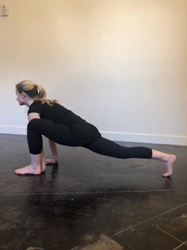
- Start in a table position
- Step one foot to the top of the mat
- Step your other foot to the back of the mat
- Open your foot at the top of the mat all the way to the side
- Bring your hands inside of your foot and wait for a fly - stick out your tongue and catch one!
Reflection Questions:
- What was your favorite yoga position? Why that one?
- How did you feel trying all of these different yoga positions?
- Why do you think yoga is important for your mind and body?
- When do you think it is a good time to try yoga?















